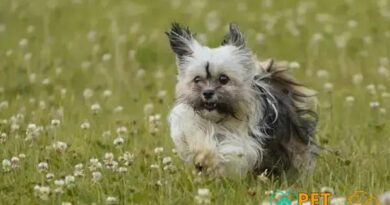What is Neighborhood Walks
What is Neighborhood Walks?
Neighborhood walks refer to the practice of taking your dog for a stroll around your local area. This activity not only provides essential exercise for your canine companion but also serves as a fantastic opportunity for socialization and exploration. Dogs thrive on routine, and incorporating regular neighborhood walks into their daily schedule can significantly enhance their overall well-being.
The Benefits of Neighborhood Walks
Engaging in neighborhood walks offers numerous benefits for both dogs and their owners. For dogs, these walks help to burn off excess energy, reducing the likelihood of behavioral issues stemming from boredom or pent-up energy. Additionally, the exposure to different sights, sounds, and smells during these walks stimulates a dog’s senses, contributing to their mental health and happiness.
Socialization Opportunities
One of the key aspects of neighborhood walks is the chance for dogs to socialize with other dogs and people. Meeting fellow pet owners and their furry friends can help your dog develop better social skills and reduce anxiety in new situations. Regular interactions during walks can also foster a sense of community among dog owners, creating a supportive network for sharing tips and experiences.
Choosing the Right Route
When planning neighborhood walks, it’s essential to choose routes that are safe and enjoyable for both you and your dog. Look for paths with minimal traffic, well-maintained sidewalks, and plenty of green spaces. Exploring different routes can keep your walks interesting and provide new experiences for your dog, which can be beneficial for their mental stimulation.
Timing Your Walks
Timing is crucial when it comes to neighborhood walks. Early mornings or late afternoons are often the best times to walk your dog, especially during warmer months. This helps to avoid the heat of the day, which can be uncomfortable for both you and your pet. Additionally, walking during these times can help you avoid crowds, allowing for a more relaxed experience.
Essential Gear for Neighborhood Walks
Having the right gear can make neighborhood walks more enjoyable and safe. A sturdy leash and a comfortable harness are essential for keeping your dog secure while allowing them to explore. Consider investing in a reflective vest or collar for your dog, especially if you plan to walk during low-light conditions. Don’t forget to bring water for both you and your dog, particularly on warmer days.
Training During Walks
Neighborhood walks can also serve as an excellent opportunity for training. Incorporating commands such as “sit,” “stay,” and “heel” during your walks can reinforce good behavior and strengthen your bond with your dog. Using positive reinforcement techniques, such as treats and praise, can make training sessions enjoyable and effective, ensuring that your dog remains well-behaved in various situations.
Health Considerations
Before embarking on neighborhood walks, it’s essential to consider your dog’s health. Regular veterinary check-ups can help ensure that your dog is fit for exercise. Older dogs or those with health issues may require shorter, more frequent walks. Always pay attention to your dog’s behavior during walks; if they seem tired or reluctant, it may be time to take a break or adjust the intensity of your outings.
Building a Routine
Establishing a routine for neighborhood walks can greatly benefit both you and your dog. Consistency helps dogs understand when to expect their walks, which can reduce anxiety and improve their overall behavior. Aim for at least one walk per day, gradually increasing the duration and distance as your dog becomes more accustomed to the activity.
Community Engagement
Finally, neighborhood walks can foster a sense of community engagement. Participating in local dog walking groups or events can enhance your walking experience, providing social interaction for both you and your dog. These gatherings can also promote responsible pet ownership and encourage others to engage in regular exercise with their pets, ultimately benefiting the entire community.



